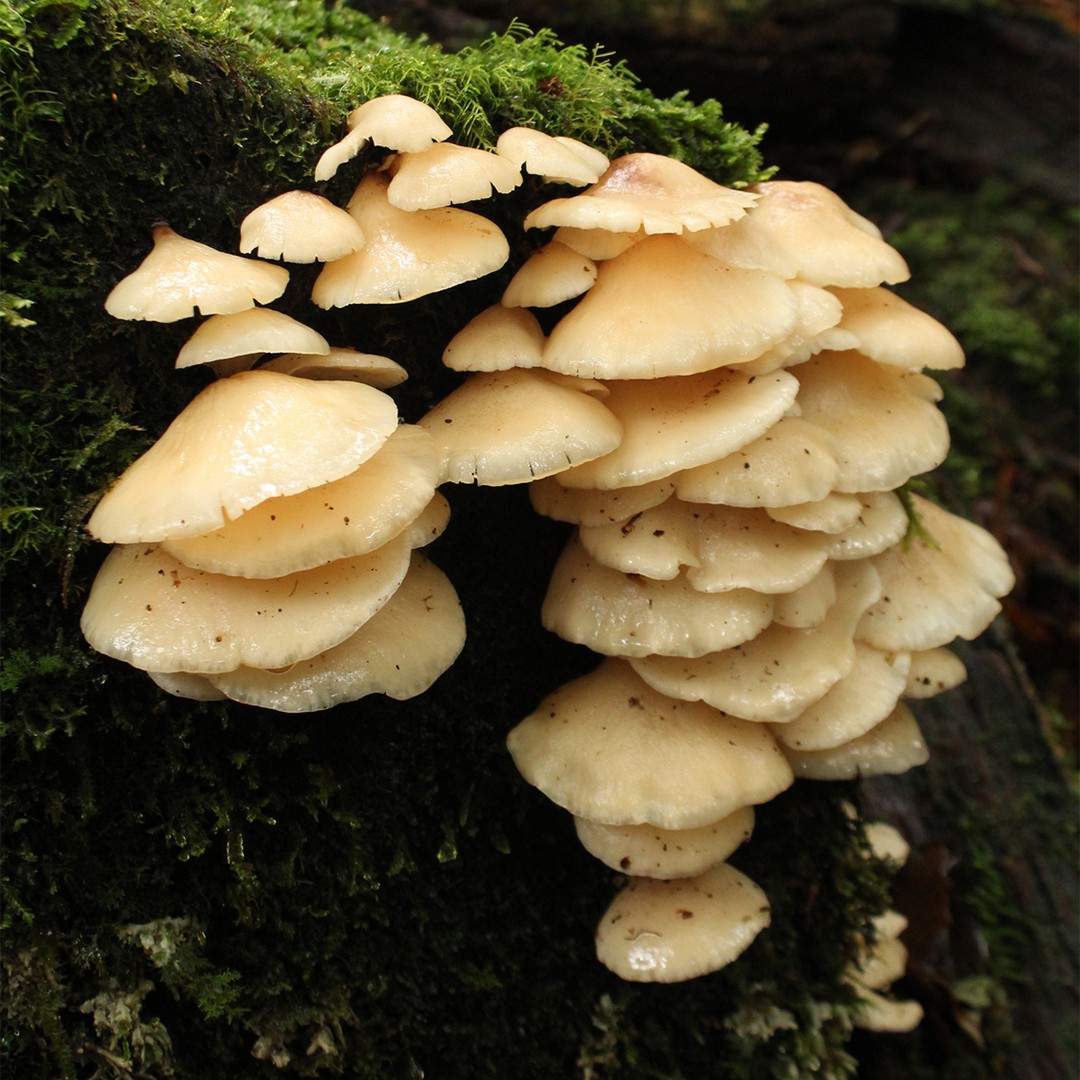Cyphellaceae
Scientific name: Cyphellaceae
Cyphellaceae
Scientific name: Cyphellaceae
 Photo By Leo botanist
Photo By Leo botanist Description
Its most famous species is Chondrostereum purpureum. After starting as just a crust on the wood, the fruiting structure develops undulating intergrowing brackets up to about 3 cm broad, which have a tough rubbery texture. The edges and fertile lower surfaces show a fairly vivid violet color while the fungus is growing, and the upper surfaces have a gray aspect (sometimes with zonation) and are covered with whitish hairs. After a week or two, the fructification dries out, becomes brittle, and turns a drab brown or beige.
Species of Cyphellaceae

 Photo By Leo botanist
Photo By Leo botanist